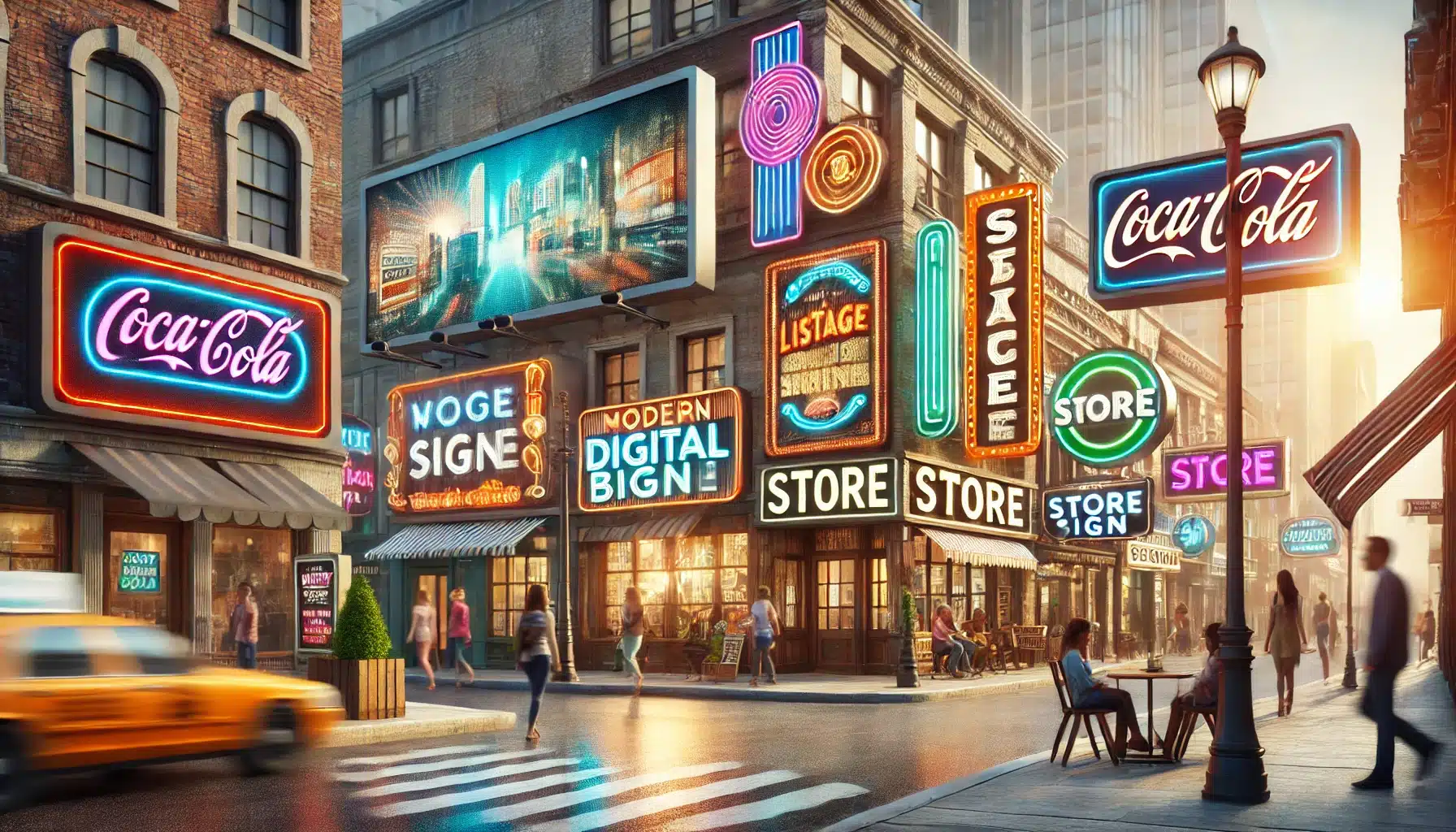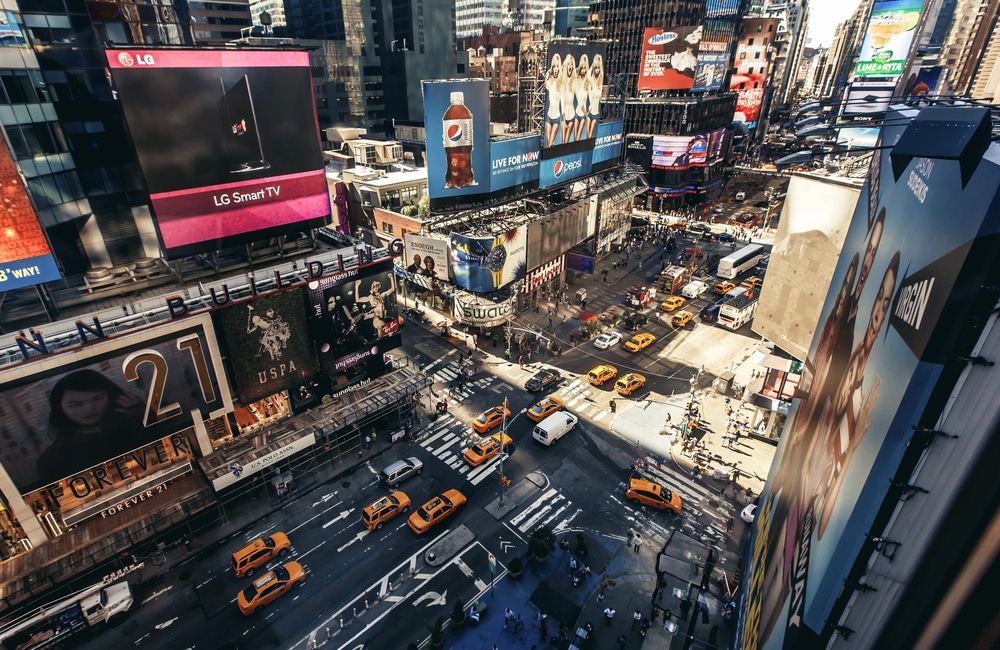Signage is everywhere—on streets, in stores, and even on ancient monuments—but how often do we stop to think about its impact on our lives? From shaping our behaviors to reflecting cultural values, signs play a bigger role than we realize. This article uncovers some of the weirdest, most fascinating facts about signage, offering a new perspective on the everyday markers that guide and influence us.
1. Historical Oddities
Ancient Beginnings:
The origins of signage trace back thousands of years to ancient civilizations like Rome and Egypt. Roman milestones, for example, were inscribed with distances and directions, acting as some of the earliest road signs. In Egypt, merchants carved symbols into stone to advertise goods.
Medieval Mandates:
Did you know that in 1389, King Richard II of England required pub owners to hang signs identifying their establishments? This decree aimed to help ale inspectors identify and regulate businesses—an early form of commercial branding combined with public accountability.
2. Psychological Insights
Impulse Influence:
Studies show that 76% of consumers have entered a store they had never visited before, based solely on its signage. A clear, compelling sign can trigger curiosity and spur spontaneous purchases, making it an essential tool for businesses.
Perceived Quality:
Consumers subconsciously link the quality of signage to the quality of the business itself. Poorly designed or faded signs can deter potential customers, while polished, professional signage creates a sense of trust and credibility.
3. Cultural Variations
Symbolism Across Borders:
Colors and symbols in signage can carry vastly different meanings across cultures. For example, red often signifies danger or caution in Western countries, but in China, it represents luck and prosperity. This is why international businesses must tailor signage to local cultural norms.
Language and Typography:
The typography and language used in signs often reflect a region’s cultural identity. For example, traditional Japanese signage incorporates calligraphic elements, blending art with communication, while Western signs lean towards bold, utilitarian fonts for readability.
4. Technological Transformations
Neon Revolution:
The invention of neon lighting in the early 20th century revolutionized urban landscapes. Neon signs became icons of nightlife, with cities like Las Vegas and Tokyo transforming into glowing hubs of commerce and entertainment.
Digital Signage Boom:
Fast forward to today, and the global digital signage market is projected to reach $32 billion by 2026. From dynamic menus at fast-food chains to interactive displays in retail stores, digital signage is redefining how businesses engage with customers.
5. Unusual Signage Laws
Unique Regulations:
Some cities have surprisingly strict signage laws. For instance, São Paulo, Brazil, banned outdoor advertisements in 2006 to combat visual pollution. Meanwhile, Vermont prohibits billboards altogether, preserving its scenic landscapes.
Mandatory Signage:
In the UK, businesses like pubs and inns are required by law to display signs with clear identification, a tradition that dates back centuries. Similarly, many U.S. cities require signage to include braille for accessibility.
6. Iconic Signage Stories
The Hollywood Sign:
Originally erected in 1923 as an advertisement for a real estate development called “Hollywoodland,” the sign has since become a global symbol of the entertainment industry. Its transformation from a marketing tool to a cultural icon is a testament to the power of signage.

Times Square Transformation:
Once a quiet part of New York City, Times Square is now synonymous with illuminated signage. Its iconic billboards are so influential that advertising here is considered a milestone for global brands.
7. Signage and Safety
Traffic Sign Evolution:
Standardized traffic signs only became a reality in the 20th century. Before that, shapes and colors varied widely, creating confusion for drivers. Today, the familiar red stop sign and yellow caution signs are universally recognized, thanks to consistent design standards.
Wayfinding Innovations:
Modern airports and hospitals use advanced wayfinding signage to help people navigate complex spaces. These signs incorporate universal symbols and strategic placement to reduce stress and improve efficiency.

8. Environmental Considerations
Sustainable Signage:
Eco-conscious businesses are increasingly turning to signage made from recycled or biodegradable materials. Solar-powered LED signs are also gaining traction, reducing energy consumption while maintaining visibility.
Light Pollution Concerns:
Illuminated signs can contribute to light pollution, particularly in urban areas. Some cities now regulate the brightness and operating hours of digital signage to mitigate this impact.
Conclusion
Signage is more than a tool for advertising or navigation—it’s a window into history, culture, and technology. From ancient milestones to cutting-edge digital displays, signs have evolved to shape how we interact with the world around us.
The next time you pass by a sign, take a moment to appreciate its design, purpose, and the weird and wonderful stories behind it.
At Tupp Signs, we specialize in crafting custom signage solutions that stand out and tell your story. Ready to create something memorable? Contact us today!
FAQ Section
-
What is the origin of signage?
- Signage dates back to ancient civilizations like Rome and Egypt, where merchants used stone carvings to advertise goods and guide travelers.
-
How does signage influence customer behavior?
- Signage influences customers by creating first impressions, driving impulse decisions, and associating business quality with the professionalism of its signage.
-
What are some unusual signage laws?
- Examples include São Paulo’s ban on outdoor advertising to reduce visual pollution and Vermont’s prohibition of billboards to preserve scenic views.
- What materials are used in sustainable signage?
- Sustainable signage often uses recycled plastics, biodegradable substrates, or FSC-certified wood. Solar-powered LED lighting is also a common eco-friendly feature.
-
How has digital signage changed the industry?
- Digital signage has revolutionized the industry with dynamic content, real-time updates, and interactive features, making it a preferred choice for modern businesses.
Resources for Further Reading
1. Sign Research Foundation
Discover insights and studies on signage trends, customer behavior, and best practices.
2. National Museum of American History – Signage History
Explore the history of American signage and its role in commerce and culture.
3. Digital Signage Today
Stay updated on the latest trends and innovations in digital signage.
4. EcoWatch – Sustainable Advertising Materials
Learn about eco-friendly materials and practices in the signage industry.
5. Tupp Signs – Custom Signage Solutions
Explore a variety of custom signage options tailored to your business needs.
Key Statistics
- Impulse Buying: 76% of customers say they’ve entered a store they’ve never visited before based solely on its signage (FedEx).
- Digital Signage Growth: The global digital signage market is projected to reach $32 billion by 2026 (Statista).
- Recall Rates: 83% of consumers recall a business based on its signage (Sign Research Foundation).
- Environmental Impact: Switching to LED signage can reduce energy consumption by up to 80% compared to traditional lighting (Energy.gov).
- Customer Trust: Businesses with professional signage are perceived as 68% more trustworthy by customers (Small Business Trends).




